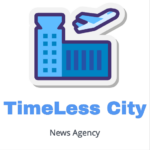The Value of American Sign Language Interpreting for the Community of the Deaf and Hard of Hearing
by timelesscity
Members of the Deaf community in the US and Canada utilize American Sign Language (ASL), a visual-gestural language. It is not just an image of English; it is a full language with its own distinct syntax, grammar, and vocabulary. ASL is a rich and lively language with a long and intriguing history that is used to communicate through hand gestures, facial expressions, and body movement. This blog article will discuss American Sign Language (ASL), its significance to the Deaf population, interpreting services in ASL, and the advantages of learning and utilizing ASL in daily life.
A “Young” Language is American Sign Language
Despite the fact that deaf people have always communicated through gestures and body language, a standardized sign language was not created until schools for the deaf were established. The origins of modern ASL may be traced back to the establishment of the nation’s first school for the deaf in West Hartford, Connecticut, in 1817. A visual language that could be used for communication between teachers and students started to take shape, and over time, this language developed into the rich and sophisticated language that is used today.
Why Is There Still Inadequate Support for the Deaf Community?
The actual number of persons in need of ASL assistance is unknown because the term “deaf” was last included in the U.S. Census Survey in 1930. A research conducted in 2016 and published by The National Library of Medicine indicated that 2.2 million Americans who were 12 years of age or older were thought to have significant or severe hearing loss. According to the population growth in the United States after 2016, the current estimate is probably closer to 2.4 million.
As a result, twice as frequent as diabetes or cancer, hearing loss is now the third most common chronic physical ailment in the United States.
What therefore accounts for the continued undeserving of the deaf and hard of hearing? A significant contributing factor is that 98% of them do not receive instruction in sign language.
Americans with Disabilities Act (ADA) and ASL
According to the ADA Requirements for Effective Communication, “state and government services” as well as “public accommodations and commercial facilities” must have access to “qualified sign language interpreters” or real-time closed-captioning systems. Along with several other companies and organizations, public and private schools must comply with this law. Individuals who disobey face severe penalties and civil litigation. However, a large number of pupils who are deaf or hard of hearing do not get the support to which they are entitled.
Furthermore, a child’s performance in the future is greatly influenced by the education they acquire before entering public school. Over 90% of deaf children are born to hearing parents, and 72% of families do not sign with their deaf children, according to the National Institute on Deafness and Other Hearing Disorders.
A kid is at danger of experiencing “language deprivation” if there is no contact between them and their caregivers throughout the first five years of their existence. This condition can have serious consequences that may show up later in life.
The Repercussions of Language Isolation
Compared to their hearing classmates, children with hearing loss are more likely to experience academic difficulties. In classes without ASL, up to 50% of the topic is likely to be missed.
Those that are deaf are:
Compared to hearing persons, they are 26.3% more likely to have “less than high school” education.
21.3% fewer people will graduate from high school.
15% fewer people will earn a bachelor’s degree
There are long-term effects of this educational inequality outside of the classroom. Early educational disparities frequently result in later-life financial disparities.
The Health Effects of Interpreting in ASL
The National Technical Institute for the Deaf reports that heart disease, hypertension, and strokes can strike deaf people up to seven times more frequently than they do hearing people. These societies also have far higher rates of anxiety and despair. According to the Journal of Health Communications, a significant number of patients who are deaf or hard of hearing suffer from low health literacy, which exacerbates these problems.
Studies show that the availability of certified medical ASL interpreters greatly enhances the health results for the hard-of-hearing and deaf. Similar to educational institutions, healthcare professionals are mandated by federal legislation to offer interpreters and other means of communication so that they may interact with the deaf patient and any accompanying deaf family members. Pick a healthcare provider who offers ASL to patients as part of a language access program if you or a family member is deaf or hard of hearing. ASL interpreter cost could vary from institution to institution.
Members of the Deaf community in the US and Canada utilize American Sign Language (ASL), a visual-gestural language. It is not just an image of English; it is a full language with its own distinct syntax, grammar, and vocabulary. ASL is a rich and lively language with a long and intriguing history that is used…
Related Posts
- How long is the NCLEX?
- Why Choose Overseas Education Consultants For Your Masters?
- Which Course Types Are Offered on Udemy?
- The Advantages of Piano Playing for Children and Adults
- 為什麼要來英國留學?
- 3 Reasons to Start Studying Now
- 8 Useful Life Skills Your Preschoolers Should Learn
- For children, what is robotics and why is it important?
- CISSP Certification Advantages
- Primary, Secondary, and Weak Stress: Understanding the Differences
- Five Study Strategies for CCNA Certification Exam Success
- Six Excellent Techniques for Assisting Students with Disabilities in School
- How to Select the Ideal Resume Format for Your Desired Job
